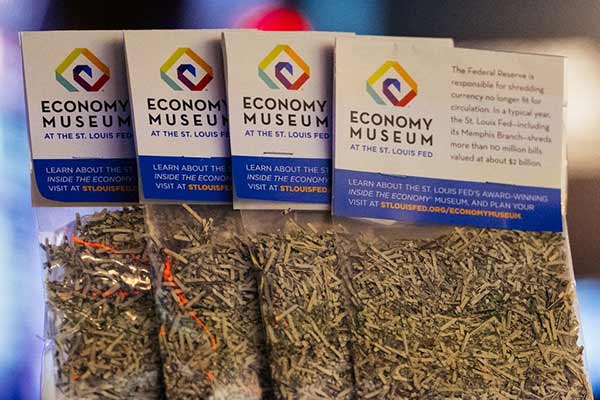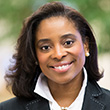Explore a Free Economic Playground inside the St. Louis Fed
What would you say if your middle school child asked you, “What is an economy?”
Not an easy question. Let’s see, we could say it is money and finance wrapped up into one. Every person impacts the economy in some way, and we are all affected by it. Or, you could start with the fundamental statement that economics is divided into microeconomics and macroeconomics:- Microeconomics studies how individuals and businesses make decisions within the economy.
- Macroeconomics looks at a bigger picture—the economy as a whole—versus individuals or small businesses.
But halfway through that explanation, your child would be fidgeting with their phone or actively backing away.
A Museum with Impact
VIDEO: The St. Louis Fed’s Economy Museum.
There is an easier way. The St. Louis Fed’s award-winning Economy Museum is a hands-on, one-of-a-kind experience that explains the economy—and your role in it—in a fun and interactive way. It’s free. And it’s not just for kids: We invite you to touch screens, watch videos, play games and get a plethora of questions answered in nearly 100 exhibits brought to life in five different zones.
Zone 1
Zone 1 introduces you to the Eighth Federal Reserve District and what we do. The St. Louis Fed is one of 12 regional Reserve banks that, along with the Board of Governors in Washington, D.C., make up the United States' central bank, known as the Federal Reserve System.
Zone 2
This section shows you how people make decisions. Learn about:
- How education makes a difference in future earnings.
- How you participate in the economy by working, spending, saving or investing.
- How to maintain a good credit score.
Zone 3
Here, you have the opportunity to see how people interact with the economy.
- Play the Trading Pit game: Be a buyer or seller and see if you can make a profit.
- Smell the scents of spices that were once exotic trade items, but now are common goods.
- Discover some of the goods and services from the district served by the St. Louis Fed (all of Arkansas and portions of six other states: Illinois, Indiana, Kentucky, Mississippi, Missouri and Tennessee).
Zone 4
See our Connections Theater with engaging videos and shorts for all ages. There are too many to name, but you can learn answers to questions like: Does the Fed print money? Is the Fed audited? Which denomination of bill lasts the longest? How many bills does it take to get to the top of the Gateway Arch?
Zone 5
It's all about you and the economy. Discover how major decisions about the economy ultimately affect you, and how your life would differ if you lived in another place.
- Understand where you fit into the labor force.
- Look at “The Earth at Night” graphic.
- Find out what measures economists use to determine economic output.
Snag Some Souvenirs

No museum would be complete without a gift shop; ours is focused on money and economic education. Unique items include money soap bars filled with real money: once you wash, you could discover a $1, $5, $10, $20 or even $50 bill inside.
There also are shredded money souvenirs; in 2017 the St. Louis Fed shredded and composted more than 119,000 pounds of cash deemed no longer fit for circulation.
If we haven’t satisfied your economic curiosity, there are free publications for the more in-depth reader as well as children’s books with parent Q&As to help you discuss economic and personal finance concepts with your budding economist.
Plan Your Visit
Add us to your “must” list for summer vacations or staycations. The economy museum opened in 2014 and is housed inside the historic St. Louis Fed, within walking distance of the newly renovated Gateway Arch grounds in downtown St. Louis. On average, it will take you a little over an hour to fully enjoy the self-guided tour.
Hours: 9 a.m. to 3 p.m. Monday through Friday, excluding holidays.
Location: Federal Reserve Bank of St. Louis
One Federal Reserve Bank Plaza, Broadway and Locust streets
St. Louis, MO 63102
This blog explains everyday economics and the Fed, while also spotlighting St. Louis Fed people and programs. Views expressed are not necessarily those of the St. Louis Fed or Federal Reserve System.
Email Us


